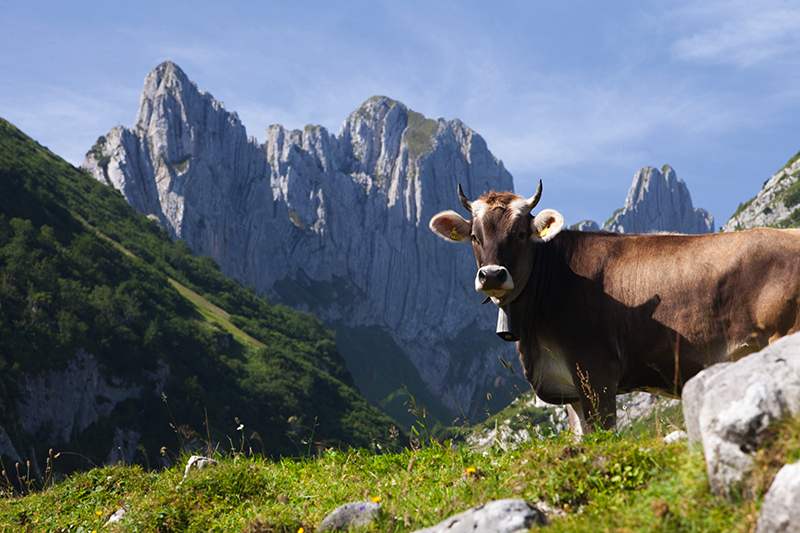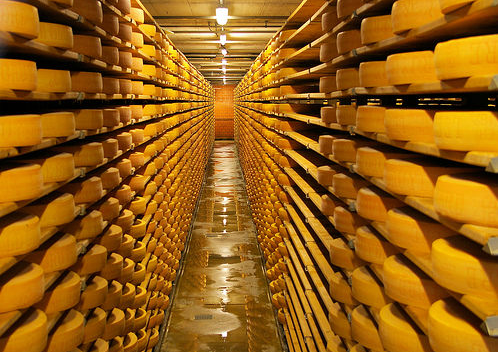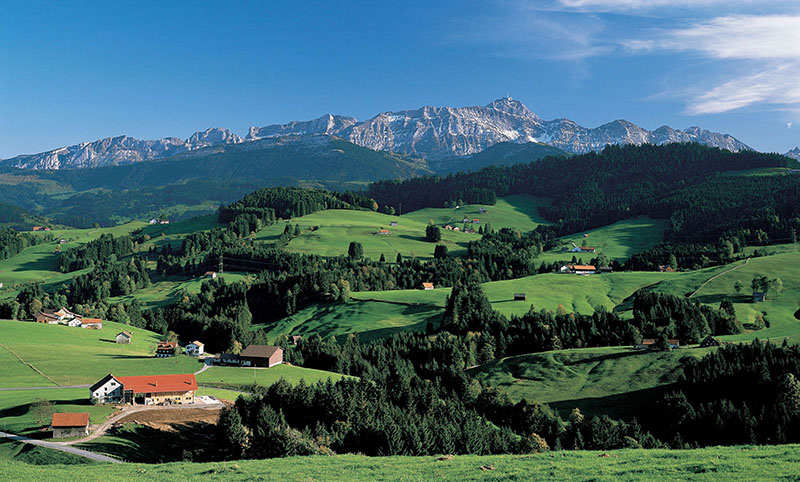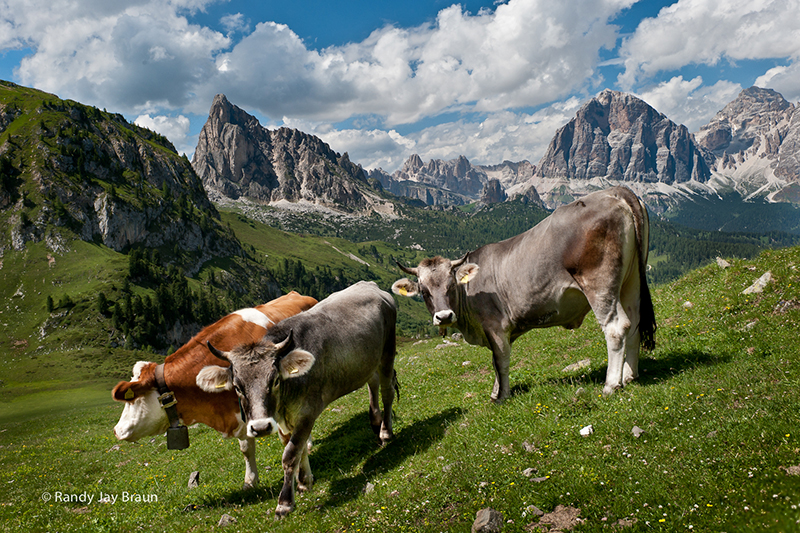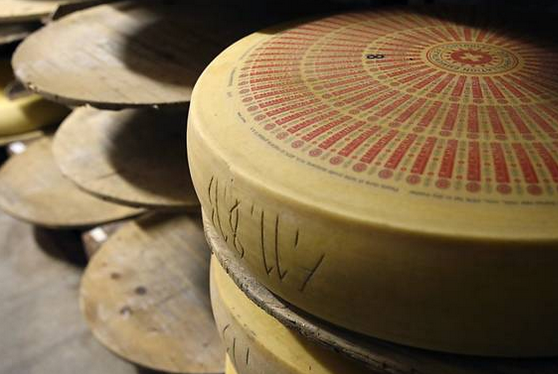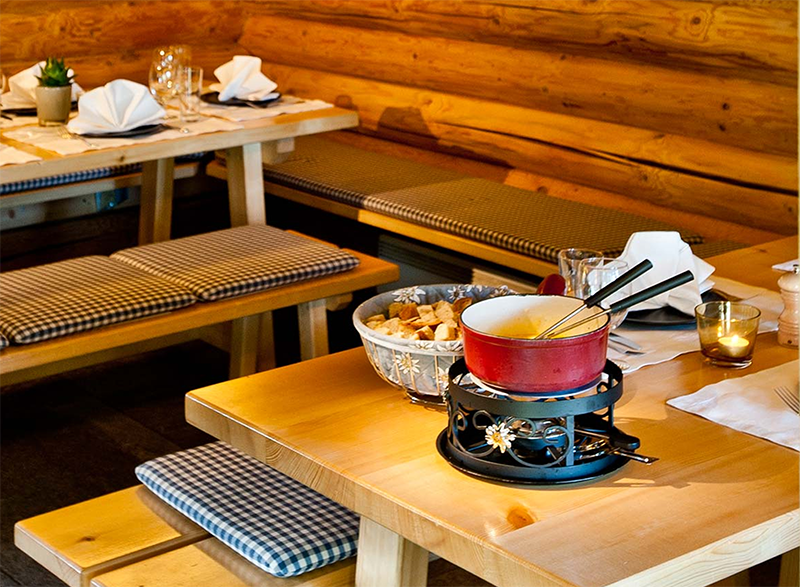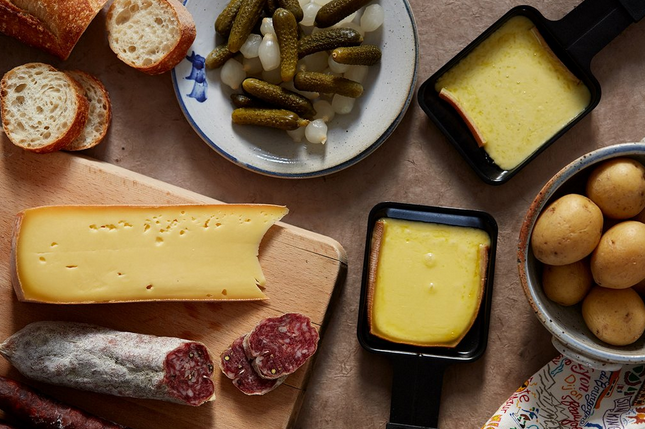From sunny mountain pastures to restaurant dining tables by the way of cool village cellars, Jo James looks at what makes cheese the essence of the Alps…
The science of cheese-making is straightforward: take some milk, add a starter enzyme and some rennet (凝乳酶) to separate the solid curds from the liquid whey. Leave it for a few weeks, months or years, et voilà: You have made cheese!
But if all cheeses essentially share the same recipe, how can there be so many different varieties? There are 450 in Switzerland alone, according to the country’s official cheese marketing association…
In a word, terroir. We may be more familiar with the concept of terroir when applied to winemaking, but it’s just as important in the world of cheese. The climate and soil affect the animals and what they eat, whether it’s cows grazing in a wildflower meadow or goats foraging in woodland. And whatever affects the animals also affects the taste of their milk and the cheese made from that milk.
While modern borders divide Germany, Austria and Switzerland, a shared history and culture of cheese-making is spread across the Alps. Dairy farmers across the region have long moved their herds from farms in the valleys up to mountain pastures each summer. Cheese-making followed naturally as a way for farmers to preserve and store the surplus summer milk for long Alpine winters.
In 2016 archaeologists discovered evidence of Swiss cheese-making dating from the Iron Age, almost three millennia ago. The direct descendent of this long tradition is Alpkäse, also known as Bergkäse or fromage d’alpage; “mountain cheese” still produced on small farms throughout the Alps each summer – a genuinely artisanal food. Each cheese enjoys a character and flavour that is particular to its region, as well as the herbs and flowers that the cows have been munching on.
Even down in the valleys, many cheeses are made using methods and equipment that would be familiar to medieval cheesemongers.
Produced since at least 1115 in the region surrounding the small town of Gruyère in French-speaking western Switzerland, true Gruyère is still made in village cheese factories according to a traditional recipe that requires 400 litres of milk to produce a single 35kg wheel of cheese.
Considered by many to be the quintessential “Swiss cheese”, holey Emmentaler is produced in enormous 70kg wheels in the valleys of central Switzerland. With a sweet flavour and riddled with holes, the cheese undergoes a long ripening process, during which bacteria consume the cheese’s lactic acid (both Emmentaler and Gruyère are essentially lactose-free) and produce the bubbles of carbon dioxide that create the holes in this pliable cheese.
Gruyère and Emmentaler are both common ingredients in Switerland’s most well-known cheese dish; fondue. To make fondue, cheese is melted with a little wine and diners use long-stemmed forks to dip morsels of food into a communal pot. (Male diners ought to be aware that tradition holds that if a man loses his bread in the pot, he must buy a round of drinks for the entire company.)
Another popular cheese dish is raclette. As with many cheese-related things in the Alps, raclette’s humble origins lie back up in the mountains. Cowherds would place cheeses next to their campfire for softening, and scrape the melted cheese onto bread to eat. Today, things are a little more sophisticated – table-top grills melt the cheese, which is served with new potatoes, cornichons and sliced ham or salami for dipping – but the focus is still very much on relaxed, sociable dining.
Beyond these well-known examples are many other lesser-known but no less delicious types of Swiss cheese to discover. “Monk’s head” Tête de Moine is served in ultra-thin shavings and was once used as currency by monks in the Bernese Jura. The extra-hard cheese Sbrinz – best grated over pasta or shaved on top of bread and butter – is thought to be Europe’s oldest cheese. The soft, creamy Vacherin made each winter in western Switzerland is served warmed in its original wooden packaging and eaten like fondue…
Whether you’re enjoying raclette at a restaurant with friends, or sampling Alpkäse in a mountain chalet, cowbells jingling in the background, Swiss cheese is an expression of the country’s beautiful landscape, long history and rich culture. Not many foods manage to combine all that in each delicious mouthful!
Warm wishes and happy travels,

* * *
Enjoy a taste of Swiss cheese and with other Alpine delights on these journeys:
Austria & Switzerland – Across the Alps in 14 days
Back Roads of the Alps – 8 days of hidden Alpine gems
